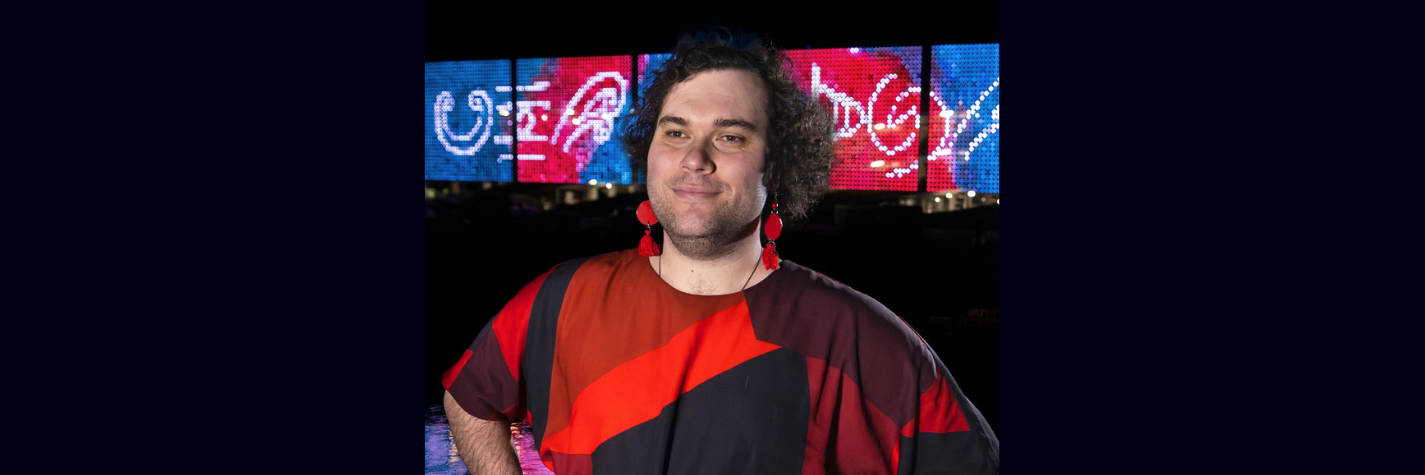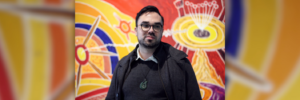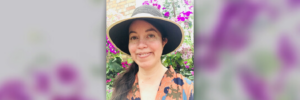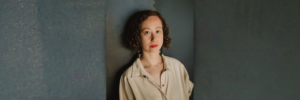
Photo credit: Brett Phibbs
essa may ranapiri (Ngaati Wehi Wehi, Ngaati Raukawa-ki-te-Tonga, Te Arawa, Ngaati Pukeko, Ngaati Takatāpui, Clan Gunn) is a poet who lives on Ngaati Wairere whenua. Their first book of poetry, ransack (VUP), was longlisted for the Ockham Awards 2020. They were the featured writer in Poetry New Zealand Yearbook 2020 with their work ‘HAUNT|HUNT’. In 2022 they co-edited the impressive anthology ‘No Other Place to Stand’ (AUP). Their second book ECHIDNA (THWUP) was also longlisted for the Mary and Peter Biggs Award for Poetry at the Ockham New Zealand Book Awards 2023. They will write until they die.
Congratulations on ECHIDNA’s inclusion in this years Ockham Longlist! This is your second time being longlisted. How does it feel to have had both of your full collections acknowledged in this way? Do you feel differently about it the second time around?
Thank you! Like you put so much of yourself into a book it’s nice for someone else to recognise it. And both of my books have made it onto the longlist which is just wow. I do feel quite differently this time though as I’m not the only Maaori person in my category unlike last time. It feels so much nicer when it’s like we’re all rising together or whatever, and Anahera and Alice’s books are just incredible.
Sometimes writers talk about their book as if it is something they’ve birthed – a struggle as well as a gift. If you were to think of your book this way, who are its whanuanga? Who helped you bring this book into the world?
I have thought about this a lot. RAM by Ari K Castañeda, Bloodclot by Tusiata Avia and Poūkahangatus by Tayi Tibble I view as whanaunga of ECHIDNA. And because we were both working on our books at the same time I view HEAL! by Simone Kaho to be related in some way to ECHIDNA, I think we really encouraged each other to keep going with our books. The three main people I would like to thank in regards to the book being in the world are Aimee-Jane Anderson-O’Connor, Ruby Solly and Michelle Rahurahu who all gave really good editorial feedback on the book before I sent it to the publisher. Also my partner Emily, I wouldn’t be able to do any of this without her.
ECHIDNA has been described as a weaving of mythology, whakapapa, contemporary spaces and colonialism as a form of exploring and celebrating takatāpuitanga. What do you hope that other takatāpui, particularly non-binary or gender fluid readers, takeaway from their reading of ECHIDNA?
That they have a place in this world and it can be found in so many places it’s often denied.
What tikanga or kawa do you apply to your writing process?
I think it’s different with every project like each thing gets its own tikanga? Like it’s specific and you can’t just lay a blanket rule over it. For ECHIDNA I wrote a lot of on my typewriter because I thought it was important to have that physical sensory experience and the rhythm of the typewriter kind of became the sonic identity of the book for me. I didn’t have many other rituals or rules for ECHIDNA except the importance of addressing my community, both literary and relational. And I also didn’t want to dive into the trauma that Echidna has experienced which is there in the text (and don’t get me wrong people can and should write about their trauma) but I felt like I had done so much of that in ransack I wanted to focus a bit more on people hanging out, ‘ECHIDNA hanging out with friends under colonisation’ is how my friend Michelle described the book after she read it the first time.
What do you think your tīpuna would think of ECHIDNA? What would their reactions be?
Why is this in English can’t read it ktk. I don’t know what they would think but I would hope they would get something out of the fun I’ve had with our traditions and atua in the poems. I hope some of them would see themselves in a way they haven’t for a long time.
As well as being an iconic writer, you’re also a talented ringatoi. Both your pukapuka are adorned with ātaahua cover art, created by you. Can you tell us about the relationship between your art and your writing, does one influence and inspire the other or is it more reciprocal?
The art for the books definitely comes after the words. With ransack I just put together something really quickly like before I could even think about it. But with ECHIDNA I went through a whole process of various different mock-ups before landing on the final idea. I wanted a monstrous face that also kind of looked like a landscape and I wanted it to be super colourful and appealing as a book cover, so it took multiple attempts to get it right. Otherwise, I use painting to chill out whereas poetry is a bit more of a meticulous activity.
What books (or other art forms) influenced you while writing ECHIDNA?
Drone by Harry Josephine Giles was an important piece (a sequence of poems that was turned into a stage performance piece). Joshua Whitehead’s Full-Metal Indigiqueer was influential in it’s structure as a narrative poem about a queer supernatural being, Strands by Keri Hulme influenced a lot of the language in the book. As I mentioned before RAM, and Bloodclot also narrative poems that are about transgressive women. I could go on for a long time hahaha always being influenced by poetry I’m reading. I think a lot of the work that inspired me found it’s way into the book.
What projects are you working on now or hope to be working on in the future?
I just finished writing a long-ish poem that is a dedication to a friend. I’m starting back on my PhD very shortly so that will be what I’m devoting all my time to. As for other future creative projects, I would really like to keep writing poetry for people I care about, like as gifts. I wrote ransack really quickly in 9 months and ECHIDNA took about 5 years so I don’t see myself writing another book anytime soon. However me and Michelle Rahurahu are starting a journal of takataapui writing Kupu Toi Takataapui and I’m very excited about that, first issue is shaping up really well and should be in the world in not too long (trying to pace ourselves on that as we’re both so busy).
Poems in ECHIDNA are dedicated to people in your life, many of them are also kaituhi Māori and also takatāpui. To what extent do these relationships impact or influence your mahi? Do you have any tips for emerging writers on how to develop and nurture community support?
These relationships are everything to my writing. I wouldn’t still be writing without my community. As for tips, I think starting a writing group with friends who are also writers is one of the biggest things you can do to keep enthusiasm about the work. And when it’s about writing for others I think it feels a lot easier in ways.
Which book by a Māori author have you read lately that you loved and what did you love about it?
Greta & Valdin by Rebecca K Reilly, the two main characters are mixed Maaori millennial gay disasters and well I can relate to that hahaha. I also finished reading The Bone People by Keri Hulme not too long ago and it’s such a beautiful and hard book and I never wanted it to end.
What advice do you have for emerging takatāpui Māori writers?
Write for yourself and your community, forget about everything else. There is a lot of weird politics around writing in New Zealand so I say this to keep the joy of writing in your heart cos so many things are going to try and stop you from keeping on. And remember everything we write now is a gift for our descendants. Truly.




